Vickers Supermarine Type 381 Seagull ASR-1
Supermarine Aviation Works Ltd. at Southampton, England was always a company well known for its flying boat and floatplane designs. This started already in 1914 wit a flying boat designed by Noel Pemberton Billing. Supermarine became famous with its flying boat and floatplane racers that were built purposely for the Schneider Cup races. In the twenties Supermarine introduced the Seagull amphibian, a single-engine biplane to be used for naval patrol. It saw several versions, the Seagull I, II, III and IV and was used not only by the British Navy, but also exported to various other countries. Under the name Seagull V Supermarine developed in the thirties a more advanced small patrol flying boat that would later be more known as the Walrus. The Walrus, and its further development the Sea Otter served well during the second Word War. They also saw some civil use. The Dutch whale hunter mother-ship Willem Barentz even used it as a whale spotter plane!

As a successor for these reliable and dependable amphibian planes, Supermarine (renamed later as Vickers-Supermarine after both companies merged), already came up in 1940 with a proposal for a new amphibian. Plans for both a biplane and monoplane version were submitted with a Rolls Royce Merlin or a Bristol Taurus as power plant, but the final choice would be a monoplane, fitted with a Rolls Royce Griffon engine. This monoplane, known as Type 381, was again named Seagull, although the logical suffix VI was not used! In this article, we shall have a closer look on this little known aircraft type.
The project is started…
In response to the Air Ministry Specification S.12/40 for a fast fleet reconnaissance amphibian for use both on land and from ships Supermarine submitted the Type 347 as a candidate in April 1941. Initially the dimensions were restricted to fit into the lift of an aircraft carrier, but this requirement was finally dropped. Under Type number 381 the final project was planned with a Rolls Royce Griffon. In the original plans and armament of four 0.303 Browning machine guns in a Nash-Tompson turret was taken up, but eventually this was deleted since the plane was not any longer needed for ocean patrol work, but strictly for Air-Sea rescue work. Consequently, it received, under the new Specification S.14/44 , the designation ASR-1.
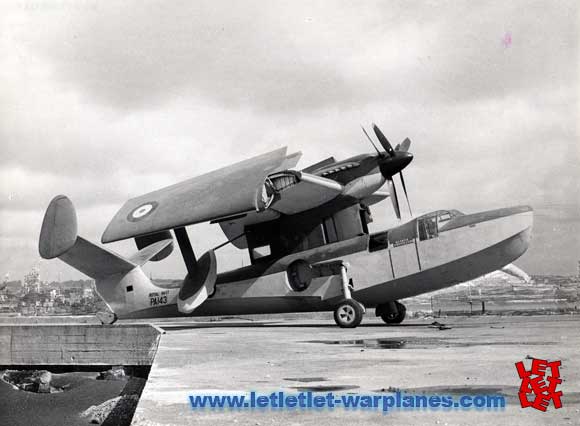
On 9 April 1943 the Air Ministry placed an order for three prototypes of the new amphibian with serial numbers PA 143, PA 147 and PA 152. Since there were still enough Walruses and Sea Otters operational, and since Vickers-Supermarine was heavily involved in Spitfire production the new Type 381 was not an urgent project and it fact the first prototype would not fly until two years after the war! All three Seagull prototypes were assembled in the experimental department at Vickers-Supermarine administrative headquarters Hursely Park, Winchester where the hulls were also made. The wings were constructed at Castle Road, Salisbury, which was one of the Spitfire dispersal centres while the tail construction was sub-contracted to Folland Aircraft at Hamble, Southampton.
Some construction details…
Being slightly larger with almost twice the weight of the Walrus, the new Seagull amphibian not only needed much more power to give sufficient performances, but also a clean aerodynamic shape. Great care was taken to give the new Seagull good streamlining. This included the use of flush-rivets in order to obtain a smooth surface.
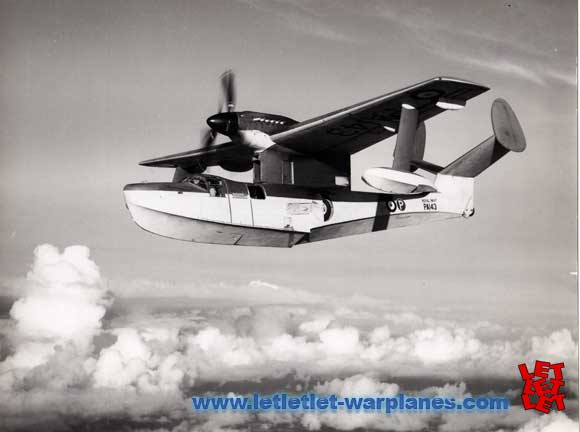
The Seagull had a number of very interesting characteristics. It was a parasol plane of all-metal construction with the wing placed on a thick pylon on top of the fuselage. This pylon, or ‘trunk’ as it was also called housed at the front side the carburettor air intake and the oil and coolant radiator. At the rear it had an observation window at each side. Also the navigator, seated behind the pilot, had at each side an observation window. In case of emergency these windows could be pushed out to give an escape route. Further it featured a variable-incidence wing. Wing incidence could be changed in flight up to 8.5 degrees by screw-jacks operated by a 1.5 hp electric motor powered by an engine-driven alternating current generator. This device, which worked similarly as on the later Chance-Vough F-8 Crusader jet fighter, was used to give the Seagull a lower landing speed. In fact a similar device was also used on Supermarine’s unsuccessful torpedo bomber Type 322 ‘Dumbo’. It worked very well; at test flying during a later stage the plane still was fully controllable at an airspeed of some 35 knots! The wings were fitted with double slats and flaps. All fuel was carried in wing tanks (3 in each wing) with a total capacity of 1295.6 litres.
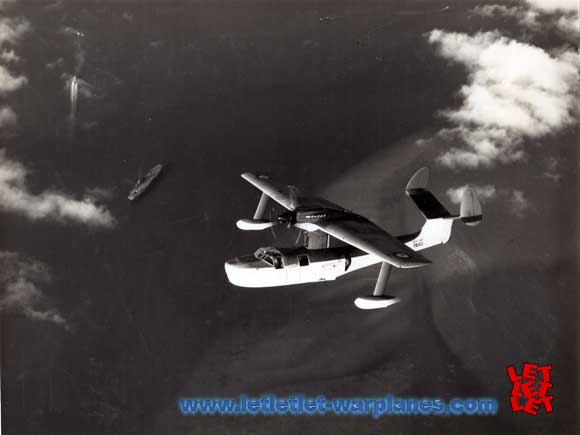
The undercarriage of the Seagull could be retracted. The main wheels fitted into wheel bays on both sides of the hull with the wheel doors partly open. The tail wheel could be retracted upwards . When down, it could also be used as a rudder at water landings and starts. The wings could be folded. The two wing floats had single struts in a fixed position. At wings completely folded, they rested against the sides of the hull. Just behind the Griffon engine was a fully retractable slinging-eye by which the plane could be hoisted with a crane. The main wheels could be quickly detached when the Seagull was only used as a flying boat; saving some 180 kg of weight.
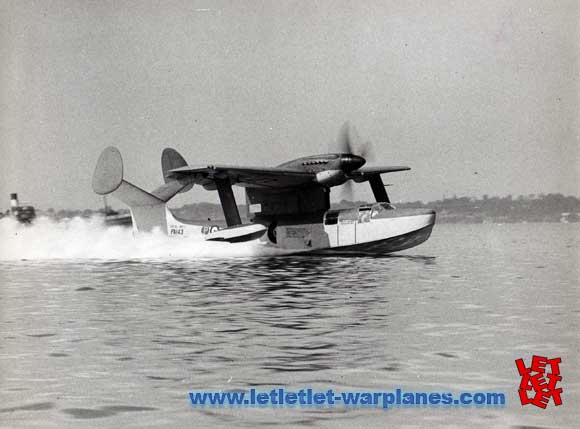
The single Griffon engine drove two three-bladed contra-rotating propellers. The Seagull had a V-shaped horizontal tail with two vertical tails at each side. Later, a third fin was added to improve stability. The Seagull had capacity for pilot, navigator, a sickberth attendant and up to seven survivors during rescue work.
Test flying…
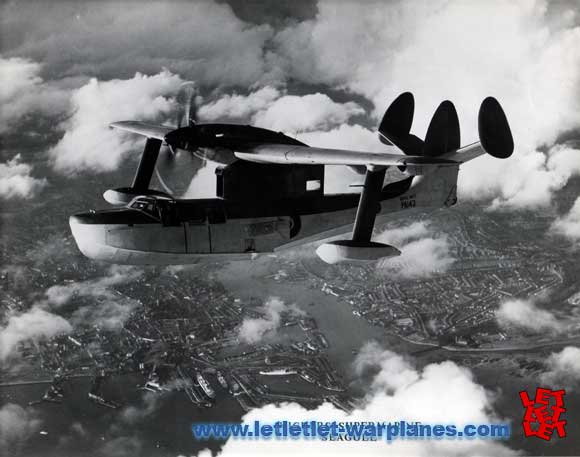
Construction of the three Seagull prototypes was started after the end of the war and the first one, PA 143, was ready for its first taxiing trials in June 1948. First flight from the water at Itchen near Southampton took place on 14 July 1948 by Mike Lightgow, a former Fleet Air Arm pilot who had just joined Vickers-Supermarine as a test pilot. Early flights showed at slow speed pronounced rolling from side to side. In spite of this, PA 143 was demonstrated by Lightgow on 11 September 1948 at the SBAC air-show at Farnborough. During further flight testing buffeting of the airflow was noted . Reason for this was found to be air leakage between engine nacelle and wing at the leading edge. This was cured by using rubber seals between wing and fuselage joint. Still, some stability problems remained, which were solved by adding a third central fin at the tail. Later, this fin was even enlarged. The central fin was used on the second prototype from the start! This machine, PA 147, joined the flight test program with a first flight on 2 September 1949. First flight of PA 147 was also made by Mike Lightgow. During the flight test program, further small modifications were made to cure all problems and at the end the Seagull was considered as having satisfactory flying and sea-handling characteristics. Also deck-landing trials on the aircraft carrier HMS Illustrious were completed successfully in October 1949. The Seagull made in total 54 deck-landings with the use of the built-in arrester hook. Since it could not be stored below the flight deck (it was too big to fit into the lift!), it was after each series of test flown back to shore. These shore flights were also used to transport up to five passengers at each flight! The speed of the Seagull was clearly demonstrated when PA 147 set on 22 July 1950 a new speed record over 100 km at 389 km/h during the Air League Cup Race at Sherburn-in-Elmet. And this record was obtained with a low-rated Griffon engine!
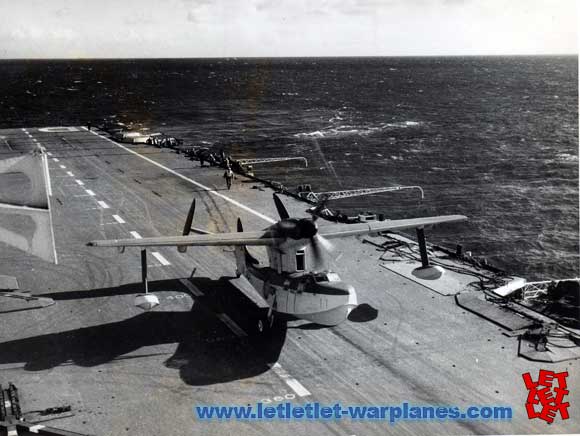
The final end…
In spite of the sufficient performances of the Seagull as a successor for both Walrus and Sea Otter it was not ordered for mass-production and the third prototype PA 152 was never completed. As a reason the advent of the first practical rescue helicopters has been given in the literature, but these hardly had the speed, range and capacity of the Seagull at that time! Most likely the ample availability of wartime Walruses and Sea Otters and the much bigger Sunderland flying boat was the main reason why Admiralty saw no further need for the Seagull.
All three prototypes were in 1952 sold as scrap for L3 each………
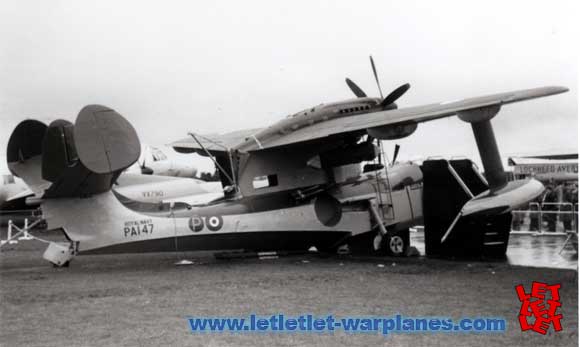
Technical data:
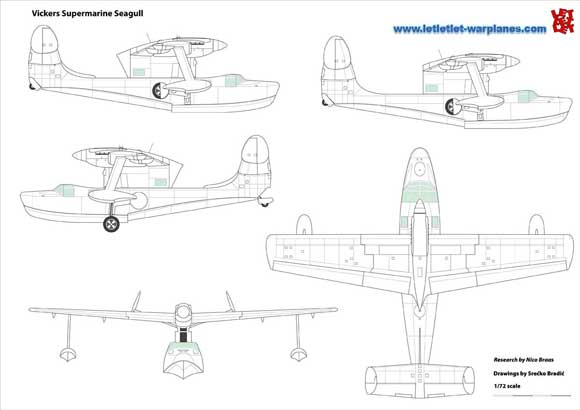
Type: High-wing amphibian single-engine monoplane for Air-Sea rescue work and advanced reconnaissance; both ship-board and land-based.
Power plant: 1 Rolls-Royce Griffon 29RG 14SM liquid-cooled 12-cylinder Vee engine of 1815 hp driving a six-bladed contra-rotating Rotol constant- speed propeller with diameter of 3.15 meter
Dimensions:
wingspan 16.00 m
length 13.46 m
height 4.82 m
wing area 40.13 m2
Weights:
Empty 4772 kg
normal loaded 6583 kg
Performances*:
Max. speed 418 km/h at 3599 m
377 km/h at sea level
Cruising speed 211 km/h for best range
Service ceiling 7290 m
Range 1408 km with standard fuel supply at cruising speed at 610 m
Equipment: accommodation for up to 10 persons both prototypes were unarmed without any special additional equipment.
No’s built: 2 completed prototypes PA143 and PA 147 and one uncompleted prototype PA 152.
*Estimated figures for operational version fitted with a Griffon RG 30 SM engine of 2500 hp
Nico Braas
References:
-Andrews, C.F. & Morgan, E.B., Supermarine aircraft since 1914, 1981 Putnam UK page 167-173 -Lumsden, A & Heffernan, T, Per Mare Probare, Aeroplane Monthly March 1987. -Burnet, Ch. & Morgan, E.B., Dumbo and Seagull. Two pairs of variable incidence prototypes, Air International, November 1982. -Anonymous, A naval amphibian from Supermarine, The Aeroplane December 12, 1947. -Anonymous, The Aeroplane Spotter, December 27, 1947. -Anonymous, Advanced amphibian, Flight, December 11, 1947





1 thought on “Vickers Supermarine Type 381 Seagull ASR-1”